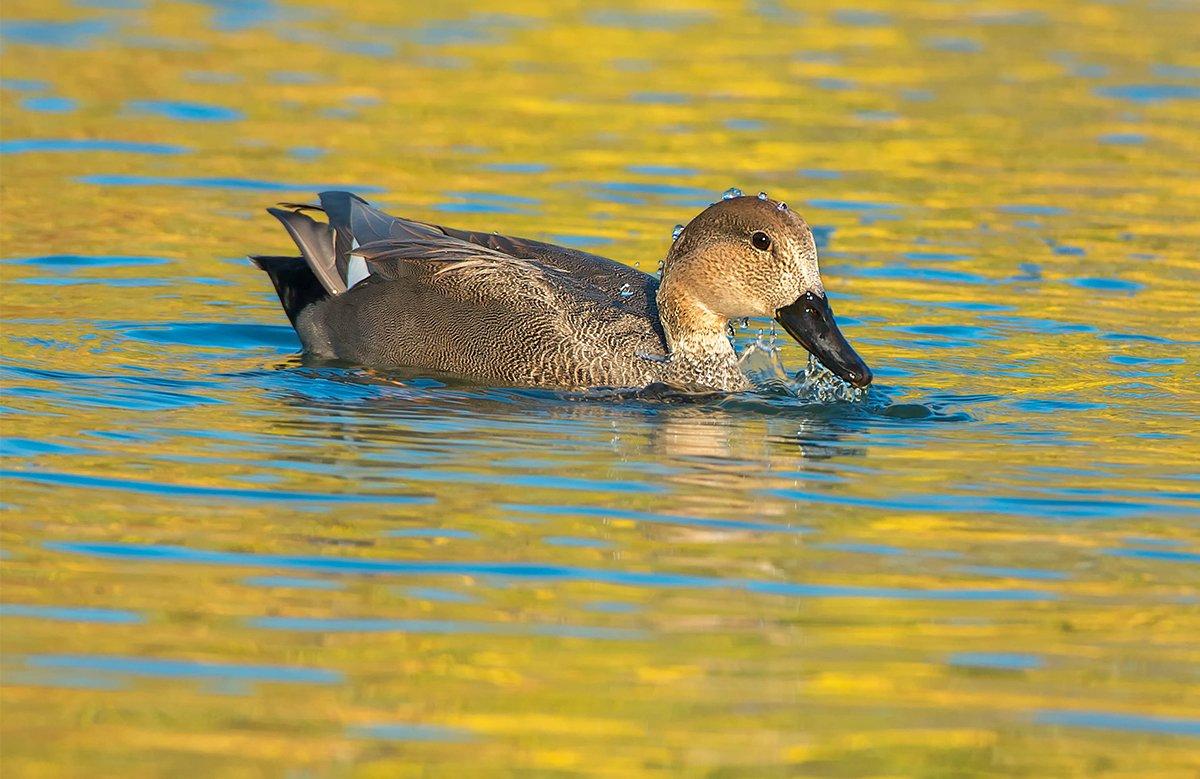Changing Circumstances Lead to an Appreciation of Gadwall
Editors' note: This is a guest "Duck Blog" from frequent contributor James Buice.
Some of my first memories of duck hunting center around hiking into a backcountry beaver dam swamp and shooting wood ducks. At that time, that was duck hunting at its finest.
Later, as the expanse of my waterfowl scope increased, I found swamps like those of my youth, but instead of a few pairs of woodies blazing through the trees, there were dozens — sometimes hundreds — of mallards that seemed to float down through the timber in a cacophony of wingbeats. That became the new benchmark; what I would judge all duck hunting on. Not that I was, or still am, a flooded-timber greenhead snob. Far from it. But for the act as a whole, the calling, anticipation, sounds and sight of big ducks dropping into a timber is what most duck hunters dream of.
The problem with hunting flooded timber, unless you are one of the elite few who own or have access to privately regulated green-timber refuges, is that it can be unreliable. I hunt public land about 99.9 percent of the time when looking for ducks in the trees. I had an invite one time — hence the .1 percent — to a very exclusive duck club and found that even with millions of dollars and the best management money can buy, a duck is impervious to bribery. Solitary invites aside, if the public land we hunt isn't flooded to the desirable level naturally, we just don't hunt the timber.
With the Delta region having years of spate or drought back to back, providing monumental flooding or desert-dry conditions, the green-timber hunting has been almost nonexistent save a few days each season. Sure, you hear stories of seven-man limits before breakfast, and yeah, we've had a few of those, but it's just not the norm, and you're usually left scratching out what you can in poor conditions or relocating to parts more hospitable. For me, that means hunting flooded fields, river marsh and big water. This also means coming to terms with the fact that greenheads are not first on the menu. Replacing the brightly festooned crowns of green and glowing flanks of the mallard is the dull, humdrum, almost quack-less gadwall.
The gadwall, or gray duck, has overthrown the king mallard in these parts as the most common duck encountered. That's especially true when you step out of the timber and into more open water and marsh habitat. You'll run into mallards, sure, but their commonality mirrors the enthusiastic, Those are greenheads hissed when a group approaches the spread. Instead of orchestral calling and working birds on the corners, you're often left with a few grunts, maybe a quack or two, and lots of watching as a group of gadwall tirelessly circles your spread before leaving without a tip of the wing.
Despite their persnickety nature and lack of desire to play the calling game, gadwall have slowly back-flapped their way into my heart. Their proclivity for not acting like the beloved mallard has forced me to adapt, change the way I hunt and, in the end, become a better waterfowler. With a population growing 13 percent higher than the previous year and more than 110 percent higher than long-term average, the gadwall is here to stay and will, by all accounts, continue the forward march.
So, call it a love by necessity; an arranged marriage between the hunter and fowl. I've come to appreciate the gray duck for being another progression in the waterfowl landscape. From swamp woodies, to green timber mallards and now gray ducks in the marsh, sunrise continues to find us hunkered down with anticipation of beating wings.
Click here for more Realtree waterfowl hunting content. And check us out on Facebook.







